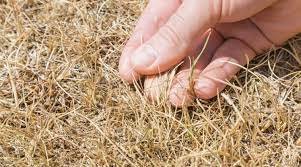Maintaining a lush, green lawn can be a challenge, especially during hot summer months when temperatures soar and rainfall may be scarce. “Grass dying in the heat” is a common concern among homeowners and gardeners, often caused by a combination of factors ranging from inadequate watering to soil conditions and lawn care practices. In this article, we’ll explore the reasons behind grass dying in the heat, effective prevention strategies, and tips for revitalizing your lawn if it starts to show signs of distress.
Causes of Grass Dying in the Heat
- Lack of Water: Insufficient moisture is one of the primary reasons why grass may struggle or die in hot weather. When temperatures rise, grass requires more water to stay hydrated and maintain its health. Without adequate irrigation, especially during drought conditions, grass can quickly wilt and turn brown.
- Heat Stress: Like any plant, grass can experience stress from excessive heat. High temperatures accelerate water loss through transpiration, leaving grass susceptible to dehydration and damage. Certain grass species are more tolerant of heat stress than others, but prolonged exposure to intense heat can overwhelm even resilient varieties.
- Poor Soil Quality: Soil that lacks nutrients or proper structure can hinder grass growth and resilience. Compacted soil restricts root development and water penetration, making it harder for grass to access essential nutrients and moisture during hot weather.
- Improper Lawn Care Practices: Over-fertilization, mowing too short, or mowing during the hottest part of the day can weaken grass and increase its vulnerability to heat stress. These practices can also contribute to nutrient imbalances and soil compaction, further compromising lawn health.
- Disease and Pest Infestation: Heat-stressed grass may become more susceptible to diseases and pests that thrive in warm, dry conditions. Fungal infections like brown patch and pests like chinch bugs can quickly spread and damage weakened grass.
Prevention and Maintenance Tips
- Proper Watering: Establish a consistent watering schedule, preferably in the early morning or late evening to minimize water loss through evaporation. Water deeply and infrequently to encourage deep root growth, which helps grass withstand heat stress better.
- Mulching: Apply a layer of organic mulch around trees, shrubs, and garden beds to retain soil moisture and moderate soil temperature. Mulch also helps improve soil structure over time as it breaks down.
- Aeration: Regularly aerate your lawn to alleviate soil compaction and improve water and nutrient absorption. Core aeration allows air, water, and nutrients to reach grassroots more effectively, promoting healthier growth.
- Fertilization: Use a balanced fertilizer appropriate for your grass type and region. Avoid excessive nitrogen during hot weather, as it can promote lush growth that requires more water and may increase susceptibility to heat stress.
- Mowing Practices: Maintain a proper mowing height suitable for your grass species. Taller grass shades the soil, retains moisture, and develops deeper roots, which are beneficial during hot weather. Avoid cutting more than one-third of the grass blade length at once.
- Disease and Pest Control: Monitor your lawn regularly for signs of disease or pest infestation. Promptly treat any issues to prevent them from spreading and causing further damage to heat-stressed grass.
Revitalizing Heat-Stressed Grass
- Watering: If your grass starts to show signs of heat stress (wilting, browning), increase watering frequency and adjust irrigation to ensure sufficient moisture penetration.
- Overseeding: Consider overseeding bare or thinning areas with heat-tolerant grass species suitable for your region. Fall is often the best time for overseeding in many climates.
- Soil Amendments: Improve soil quality by incorporating organic matter such as compost or topsoil to enhance nutrient availability and water retention.
- Avoiding Heavy Traffic: During periods of heat stress, minimize foot and vehicle traffic on the lawn to reduce additional stress on weakened grass.
Environmental Considerations
- Water Conservation: Practice water-efficient landscaping techniques, such as using drip irrigation systems and native plants that require less water than traditional lawns.
- Sustainable Lawn Care: Adopt sustainable lawn care practices that promote water conservation, soil health, and biodiversity in your yard.
Conclusion
In conclusion, understanding the causes of grass dying in the heat and implementing proactive lawn care practices are essential for maintaining a healthy and vibrant lawn throughout the summer months. By addressing issues such as proper watering, soil quality, and lawn maintenance, homeowners can minimize the risk of heat stress and ensure their grass remains resilient and attractive year-round.
By nurturing your lawn with adequate water, proper nutrition, and mindful maintenance, you can enjoy a lush green oasis even during the hottest days of summer. Protecting your grass from heat stress not only enhances curb appeal but also contributes to a more sustainable and resilient landscape.





